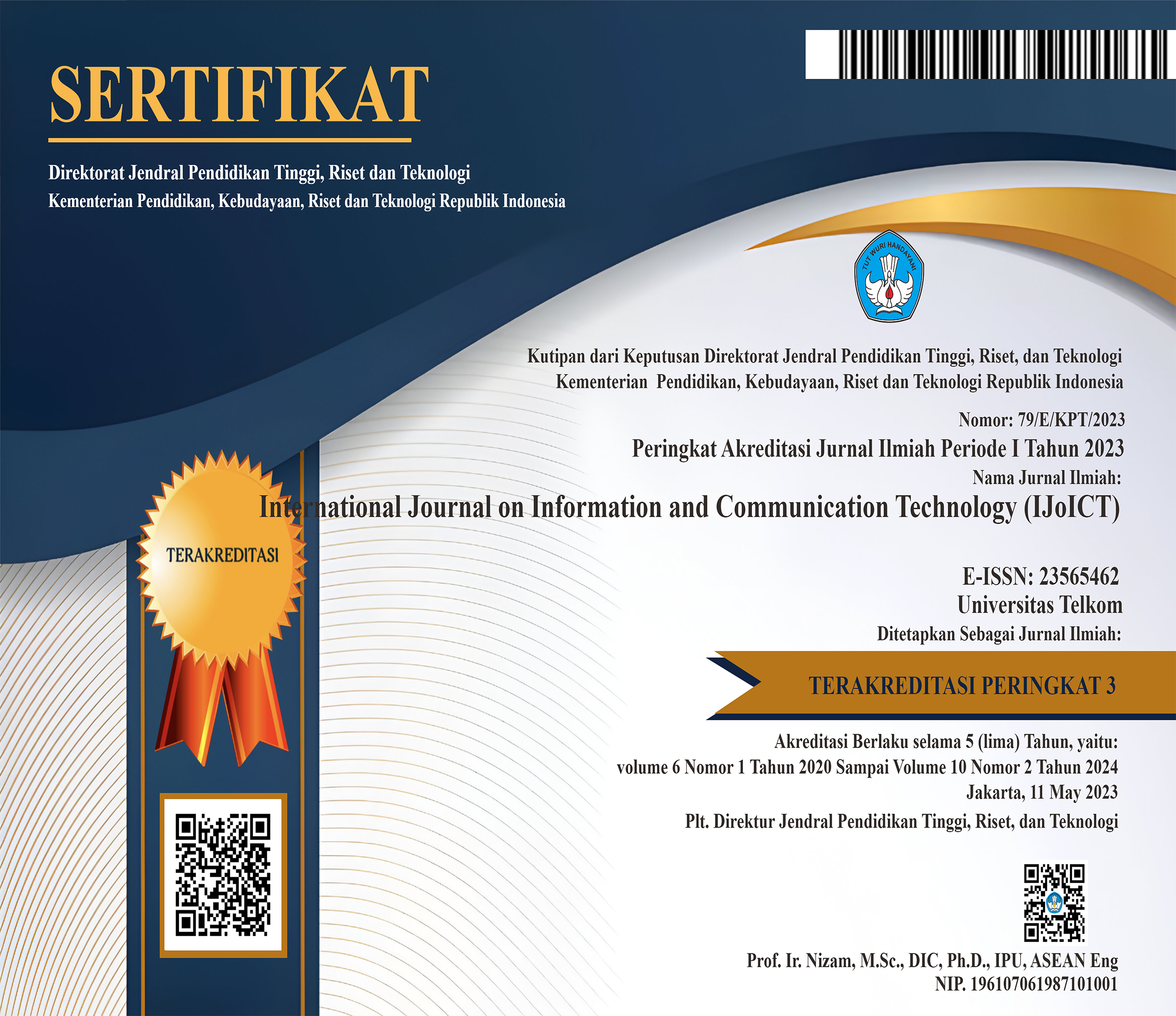Multivariate Markov Chain Model for Sales Demand Estimation in a Company
 Abstract views: 453
,
Abstract views: 453
,
 pdf downloads: 353
pdf downloads: 353
Abstract
Estimation of the number of demands for a product must be done correctly, so that the company can get maximum profit. Therefore, this study discusses how to estimate the amount of sales demand in a company correctly. The model that will be used to estimate sales demand is the Multivariate Markov Chain Model. This model can estimate the future state by observing the present state. The model requires parameter estimation values ​​first, namely the transition probability matrix and the weighted Markov chain, where in previous studies an estimation of the transition probability matrix has been carried out, so that in this study we will continue to estimate the weighted Markov chain parameters. This model is compatible with 5 data sequences (product types) defined as product 1, product 2, product 3, product 4, and product 5, with 6 conditions (no sales volume, very slow-moving, slow-moving, standard, fast moving, and very fast moving). As the result, the state probability for product 1, product 2 and product 3 in company 1 are stationary at state 6 (very fast moving), product 4 and product 5 are stationary at state 2 (very slow moving).
Downloads
References
A. Martina, “Penggunaan Model Rantai Markov Multivariat Untuk Estimasi Permintaan Penjualan Pada Suatu Perusahaanâ€, Thesis, Indonesia: Bandung Institute of Technology, 2015
A. Martina, “Sales Demand Forecasting Using One of Multivariate Markov Chain Model Parameter,†International Journal of Information Communication Technology (IJoICT), 2020, doi: 10.21108/IJOICT.2020.00.533
A. Martina, “Analysis the Increment of COVID-19 in Indonesia with One of MUltivariate Markov Chain Parameterâ€, in Indonesia: 1st International Conference on Mathematics and Mathematics Education (ICMMEd), 2020.
W. Ching, Li, L., Li, T., Zhang, S., “A New Multivariate Markov Chain Model with Applications to Sales Demand Forecasting†in China: International Conference on Industrial Engineering and Systems Management, 2007.
W. Ching and Ng. Michael K. “Markov Chains: Models, Algorithms and Applicationsâ€, United States of America: Springer+Business Media, Inc., 2006.
L. Megasalindri, “Prediksi Permintaan Penjualan dengan Menggunakan Model Rantai Markov Multivariat†undergraduate final project, Indonesia: Bandung Institute of Technology,2013.
Cruz. Juan A.R. “Sensitivity of the Stationary Distributions of Denumerable Markov Chains,†Statistics & Probability Letters, 2020, doi: 10.1016/j.spl.2020.108866.
Huang. W, An. Yuting, Pan. Yue, Li. Jinghua, Chen, Chun., “Predicting Transient Particle Transport in Periodic Ventilation Using Markov Chain Model with Pre-Stored Transition Probabilitiesâ€, Building and Environment, 2021, doi: 10.1016/j.buildenv.2021.108730.
Wei. W., Xu. W., Liu. Jiankang, “Stochastic P-Bifurcation Analysis of a Class of Nonlinear Markov Jump Systems Under Combined Harmonic and Random Excitations,†Physica A: Statistical Mechanics and its Applications, 2021, doi: 10.1016/j.physa.2021.126246.
Hu. Mengqiang, Liu. Wei, Xue. Kai, Liu. Lumeng, Liu. Huan, Liu. Meng, “Comparing calculation methods of state transfer matrix in Markov chain models for indoor contaminant transport,†Building and Environment, 2021, doi: 10.1016/j.buildenv.2021.108515.
Muchlis, Ahmad. “Analisis Matriks,†Diktat Lectures, Indonesia: Bandung Institute of Technology. 2014.
Cao. Yi, Yao. Yuan, “A Neural network enhanced hidden Markov model for tourism demand forecasting,†Applied Soft Computing, 2020, doi: 10.1016/j.asoc.2020.106465.
Tian. Xin, Wang. Haoqing, E. Erjiang, “Forecasting Intermittent Demand for Inventory Management by Retailers: A New Approach,†Journal of Retailing and Consumer Services, 2021, doi: 10.1016/j.jretconser.2021.102662.
Sperandio. M, Bernardon, D.P., Bordin, G., Oliveira, M.O., Bordignon. S, “Probabilistic Demand Forecasting to Minimize Overtaking the Transmission Contract,†Electric Power Systems Research, 2014, doi: 10.1016/j.epsr.2014.03.005.
Pince. Cerag, Turrini, Laura, Meissner. Joern, “Intermittent Demand Forecasting for Spare Parts: A Critical Review,†Omega, 2021, doi: 10.1016/j.omega.2021.102513.
Wilinski. Antoni, “Time Series Modeling and Forecasting Based on A Markov Chain with Changing Transition Matrices,†Expert Systems with Applications, 2019, doi: 10.1016/j.eswa.2019.04.067.
Xie. Nai-Ming. Yuan. Chao-qing, Yang. Ying-Jie, “Forecasting China’s Energy Demand and Self-Sufficiency Rate by Grey Forecasting Model and Markov Model,†International Journal of Electrical Power & Energy Systems, 2014, doi: 10.1016/j.ijepes.2014.10.028.
Erreygers. Alexander, Bock. Jasper De, “Bounding Inferences for Large-Scale Continuous-Time Markov Chains: A New Approach Based on Lumping and Imprecise Markov Chains,†International Journal of Approximate Reasoning, 2019, doi: 10.1016/g.rent.2019.09.003.
Alvin. Lori, Kelly. James P., “Markov Set-Valued Functions and Their Inverse Limits,†Topology and its Applications, 2018, doi: 10.1016/j.topol.2018.03.035.
Lian. Bosen, Zhang. Qingling, Li. Jinna, “Sliding Mode Control and Sampling Rate Strategy for Networked Control Systems with Packet Disordering Via Markov Chain Prediction,†ISA Transactions, 2018, doi: 10.1016/j.isatra.2018.08.009.

This work is licensed under a Creative Commons Attribution 4.0 International License.
Manuscript submitted to IJoICT has to be an original work of the author(s), contains no element of plagiarism, and has never been published or is not being considered for publication in other journals. Author(s) shall agree to assign all copyright of published article to IJoICT. Requests related to future re-use and re-publication of major or substantial parts of the article must be consulted with the editors of IJoICT.









.png)

.jpg)




